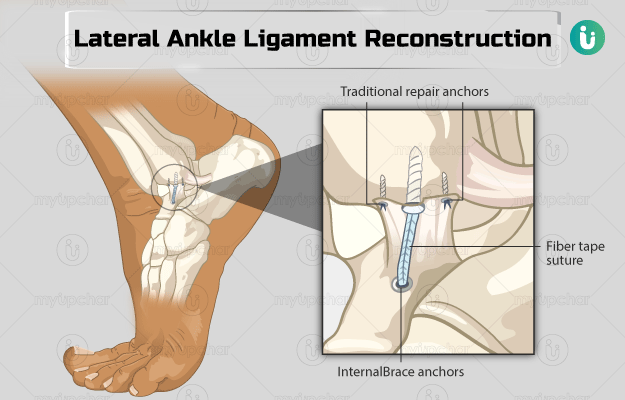Summary
Lateral ankle ligament reconstruction is done to repair damaged ligaments outside the ankle joint. Ligaments are fibres made of soft tissues, which are bundled in a rope-like structure. They hold together the bones that meet at joints and assist in joint movement. The ankle ligaments may be damaged due to frequent ankle sprains or conditions that affect the ligaments attached to it. This often leads to ankle instability that may cause severe ankle pain and discomfort. When other non-surgical techniques such as physiotherapy and bracing do not resolve the condition, the surgeon recommends a a reconstruction procedure. During the surgery, the surgeon locates the damaged ligaments and attaches them to the bones and tissues around the ankle joint. The surgery usually takes about two hours for completion. A plaster will be applied on your leg after the procedure, and you will need to use crutches for several weeks until the wound has healed and you can walk comfortably.






































